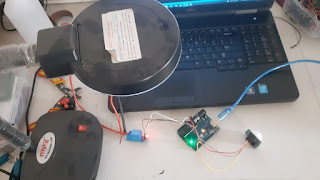DIY Motion-Activated Relay Control using Arduino


WHAT IS FERRITE BEADS?
Ferrite beads, also known as ferrite cores, are small, cylindrical or bead-shaped components made of ferrite material. Ferrite is a ceramic material that is composed of iron oxide and other metals, which gives it magnetic properties.Ferrite beads are commonly used in electronics to suppress high frequency noise or interference in electronic circuits.

They work by creating a high impedance at the frequency of the noise, which effectively blocks it from entering or leaving the circuit. The beads are placed around a wire or cable, and the wire is passed through the center of the bead. The magnetic field generated by the ferrite material effectively absorbs the high frequency noise, preventing it from interfering with other circuits or equipment.
Uses:
Ferrite beads are used in a variety of electronic applications, including power supplies, audio equipment, computer and networking equipment, and telecommunications devices. They are often used in combination with capacitors and other components to provide effective filtering of unwanted noise and interference.
There are several types of ferrite beads available, including:
Chip ferrite beads:
These are small, cylindrical components that are used in surface-mount technology (SMT) applications. They are typically used in applications where space is limited.
Bead ferrite cores:
These are larger ferrite beads that can be threaded onto wires or cables. They are commonly used to suppress common-mode noise in power cables, data cables, and other types of wiring.
Multi-aperture ferrite cores:
These are ferrite cores with multiple holes or "apertures" running through them. They are used in applications where multiple cables or wires need to be passed through the core for noise suppression.
EMI suppression beads:

These are ferrite beads designed specifically for electromagnetic interference (EMI) suppression. They are used in applications where EMI can interfere with the proper functioning of electronic circuits.
Round cable snap ferrite cores:

These are ferrite cores that can be snapped onto round cables. They are commonly used to suppress EMI in cables used in computer networking and telecommunications.
Flat cable snap ferrite cores:
These are ferrite cores that can be snapped onto flat cables. They are used in similar applications as round cable snap ferrite cores, but for flat cables.
The choice of ferrite bead will depend on the specific application and the type of noise that needs to be suppressed.
Comments
Post a Comment